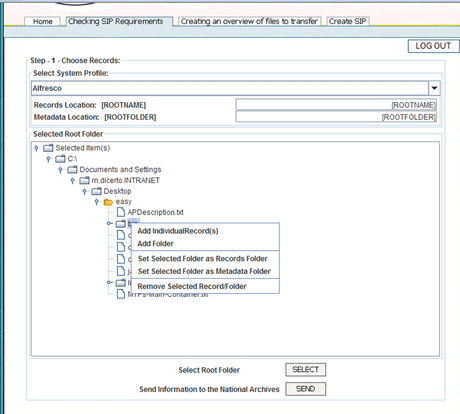Digital objects have emerged as the primary means by which people create, disseminate and exchange information. The huge volume of digital information being constantly produced means there is now a pressing demand for long-term preservation. In this article, we briefly introduce a European FP7 Research Programme funded project, PROTAGE, which will investigate new technology for computerizing long-term digital preservation based on intelligent software agents and Web services.
In recent decades, a rapidly increasing amount of information has existed in digital form, with much now being ‘born digital’. Digital objects are now the primary means by which people create, disseminate and exchange information, and they are changing the ways in which people work, live and play. Compared to traditional non-digital information such as paper documents, audio tapes etc, digital information has many appealing advantages. For example, digital information can be made available to a greater number of users; it requires less space for storage; and it is much easier to search and retrieve. As a result, it can be readily reused to create new or adjusted information.
As the volume of digital information is growing at an explosive speed, there is a pressing demand for digital objects to be transferred from various IT systems (eg PCs, laptops, PDAs) to digital repositories, libraries and archives for long-term preservation. However, due to rapid changes and ongoing development in hardware and software systems and in the ICT infrastructure, long-term archiving of digital objects is a highly complicated task. Moreover, the diversity in the size and complexity of digital objects implies that modern digital preservation systems must be highly scalable and adaptable to various types of digital objects, as well as their input, storage and access. However, existing strategies for digital preservation are labour intensive and often require specialist skills. To meet our pressing preservation demands, it is necessary to find new levels of automation and self-reliance in preservation solutions. For these reasons, long-term digital preservation has been attracting significant research and development efforts from a variety of communities with a stake in digital preservation.
PROTAGE (PReservation Organization using Tools in AGent Environments), funded by the European FP7 Research Programme, aims to employ the promising technology of intelligent software agents and Web services to computerize long-term digital preservation. This project commenced in November 2007 and is expected to finish in October 2010. Seven partners from six different European countries are involved in the PROTAGE project, namely, the National Archives of Sweden, Lulea University of Technology (Sweden), the National Archives of Estonia, Fraunhofer Gesellschaft (Germany), the University of Bradford (UK), EASY Innova SL (Spain), and Giunti Labs Srl (Italy).
PROTAGE intends to make digital preservation simple and automated, such that end users can readily preserve their digital objects while reducing the cost and increasing the capacity of preservation. PROTAGE will develop flexible and extensible software agent tools and Web services for long-term digital preservation and access, which are able to cooperate and be integrated with new or existing preservation systems. The PROTAGE system can be used to automate the submission of digital objects and their transfer between repositories, and monitor the digital preservation process. More specifically, the PROTAGE system along with its software agent tools and Web services will:
- enable digital-content creators to produce and publish digital objects in a preservation-compatible manner
- provide digital repositories with the means for further automating the preservation processes and
- facilitate seamless interoperation between content creators, libraries and archives, and end-users throughout Europe.
In general, the objectives of the PROTAGE project can be summarized as follows:
- to research the potential of intelligent software agents and Web services to support the automation of digital preservation tasks
- to demonstrate the technical feasibility of software agents and Web services by means of the PROTAGE prototype
- to analyse how the PROTAGE system can be implemented in various organizational environments
- to explore the possible integration of PROTAGE solutions with other or existing digital preservation environments
- to explore synergies with other RTD activities dealing with digital preservation.

Figure 1: The architecture of the first PROTAGE prototype.

Figure 2: A screenshot of the first PROTAGE prototype.
The PROTAGE project adopts an iterative and incremental process to implement the targeted system, which begins with identification and analysis of user needs and functional requirement analysis, followed by technical specifications, implementation and system testing. In particular, upon analysis of user needs, thirteen typical scenarios have been identified, covering the overall process of long-term digital preservation. The first prototype of the PROTAGE system, which concentrates on transferring digital objects between repositories, was implemented and released in March 2009. Figure 1 presents the architecture of the first prototype, while Figure 2 shows one of its screenshots. The second prototype, which focuses on monitoring related issues, is under development.
Links:
http://www.protage.eu/index.html
http://cordis.europa.eu/fp7/home_en.html
http://www.protage.eu/Video_Prototype_1.html
Please contact:
Xiaolong Jin
School of Computing, Informatics and Media, University of Bradford, UK
Tel: +44 1274 234070
E-mail:
Jianmin Jiang
School of Computing, Informatics and Media, University of Bradford, UK
Tel: +44 1274 233695
E-mail:
Josep Lluis de la Rosa
Rensselaer Polytechnic Institute, USA, & University of Girona, Spain
E-mail:










